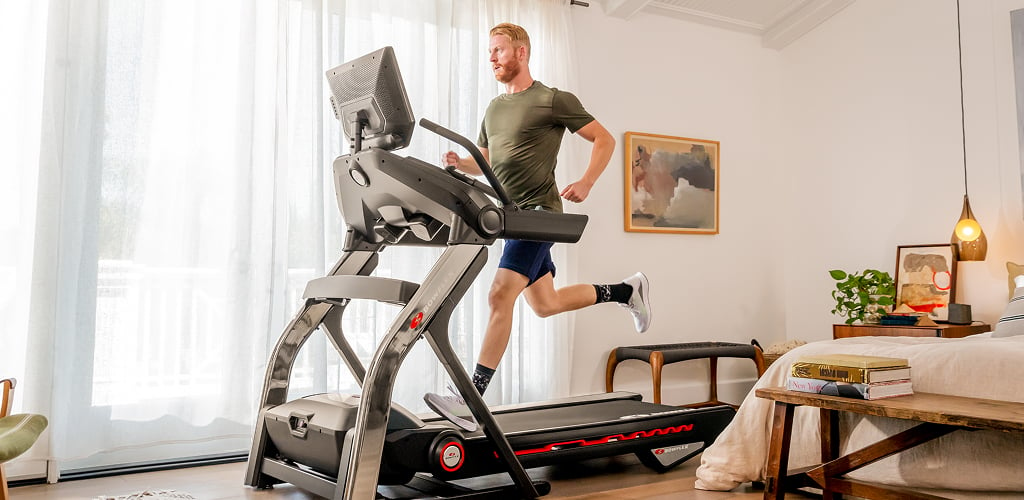How to Get Started with Heart Rate Zone Training

Fitness is personal: we all have different bodies, interests, and goals. So, it only makes sense that the way we work out should be personal, too. Enter: zone training. More than just a fitness trend, training with heart rate zones in mind is a great way to tailor workouts to your body and your goals.
Read on to discover the benefits of zone training and how to make it part of your routine.

What is Zone Training?
Zone training, also called heart rate zone training, is a targeted approach to cardio that uses your heart rate to guide the intensity of your workouts. Instead of relying on general goals like biking for 30 minutes or running at a set pace, zone training has you work in specific heart rate ranges, or zones, that represent different percentages of your maximum heart rate. Each zone aligns with a different level of effort, from an easy to all-out effort. This personalized method helps you train smarter, improve your cardiovascular fitness, and even reach your goals more efficiently.
The first step is to identify your maximum heart rate (HR max), which can be done using an age-adjusting formula: 220 — your age = estimated maximum heart rate.
Once you know your max heart rate, you can establish your unique heart rate zones. These zones are typically divided into five levels of intensity:
- Zone 1: ~50-60% of your max heart rate
- Very light effort. You'll typically be in Zone 1 during a warm-up or cool-down phase of a workout.
- Zone 2: ~60-70% of your max heart rate
- A light to moderate effort (3-4 out of 10 intensity). Ideal for longer, steady-state workouts and building aerobic capacity.
- Zone 3: ~70-80% of your max heart rate
- Moderate effort (4-6 out of 10 intensity). This zone supports aerobic endurance.
- Zone 4: ~80-90% of your max heart rate
- A hard effort (7-9 out of 10 intensity). Great for improving stamina and muscular endurance.
- Zone 5: ~90-100% of your max heart rate
To stay in the right zone during your workout, you can use a wearable heart rate monitor or a smartwatch. BowFlex treadmills, indoor cycling bikes, and Max Trainers are also Bluetooth heart rate compatible, so you can track your heart rate directly on the console, or within an app like JRNY for real-time insights.
Why Should You Consider Zone Training?
Zone training has become an increasingly popular way to train — and for good reason.
It takes the guesswork out of cardio. Instead of relying on pace, speed, or perceived effort, which can vary greatly person to person, cardio catered to your heart rate is a better and more personalized reflection of how hard you're working.
It's flexible. No matter what your fitness goals are, you can dial in your workouts by spending more time in specific zones that align with your goals. Zone 2 is ideal for building aerobic endurance and promoting fat burning — perfect for longer steady-state cardio sessions. Zone 3 supports overall aerobic fitness and helps increase muscular strength and stamina. A max effort Zone 5 workout improves speed and power.
It's motivating. Watching your heart rate and seeing your progress from one zone to the next can help you track your improvement. As your fitness improves, your heart rate becomes more efficient. Over time, you'll start to see changes in how quickly you can enter and recover from each zone.
It can reduce burnout. If you've ever felt bored from a workout, you're not alone. Alternating between different intensity zones while training can keep your workouts feeling fresh and varied. Plus, it'll help you avoid overtraining, which can increase the risk of injury.

How Can you Add Zone Training Into Your Routine?
Whether you're just getting started with zone training or have already experimented with a few workouts, here are a few easy ways to start incorporating heart rate zones into your routine:
- Structure your weekly workouts around heart rate zones. Go on a Zone 2 walk with a friend, challenge yourself with a 20-30 minute Zone 3-4 tempo run on the treadmill, or challenge yourself with a short Zone 5 sprint or HIIT workout on the Max Trainer.
- Try heart rate-based intervals. Interval training is typically based on time (e.g. 2 minutes of work, followed by 1 minute of rest). For your next indoor cycling bike workout, try biking for 2 minutes in Zone 4, followed by 2 minutes of recovery in Zone 4. Repeat 5-6 times.
- Plan dedicated recovery sessions. Not every workout should be intense — in fact, recovery workouts are crucial to helping the body repair muscle damage from intense exercise, reduce soreness, and prevent injuries. Plan at least one recovery ride, gentle Max Trainer session, or active recovery walk each week.
Zone Training, Elevated: New JRNY Features for Treadmill Users
Ready to take heart rate zone training to the next level? The JRNY app now includes over 170 brand-new zone-based cardio classes, designed to match your current fitness level and adjust over time as you improve. You'll find a range of new classes in the app that are tailored to your specific goals and training zones, including: Recover, Fat Burn, Cardio Performance, Muscle Endurance, and Speed and Power.
To make every workout even more immersive, JRNY pairs Adaptive workouts with scenic Explore the World routes. You'll be transported to beautiful destinations as you move through different heart rate zones, adding excitement and motivation to every session.
Ready to level up your cardio with zone training? New JRNY members can take advantage of a two-month free trial today.
Get workout inspiration, wellness tips, and the latest deals sent to your inbox.
The content on this blog is for informational and entertainment purposes only and should not be considered medical advice. This information is not a substitute for professional medical diagnosis, treatment, or advice. Always consult with your physician or another qualified healthcare provider before beginning any new exercise program, making changes to your fitness routine, or if you have questions about your health.
You may also like:
Product Spotlight: BowFlex T9 Treadmill

